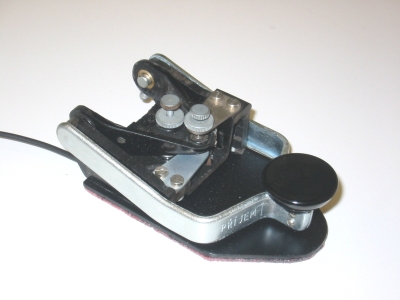Czech Key Construction
The key comprises the parts as listed here RM31 Parts ListIf you look carefully at the photo with the parts as an exploded view you can see 2 springs. The conical one is the actual compression spring used to give the key its resistance when you push the key arm down. In a fully assembled key it is mounted under the pivot arm and you cannot easily see it unless you remove the top gap adjusting plate and screws. The tension spring you see when you lift the lid is nothing to do with key arm pressure at all. Its sole purpose is to take up any slack in the brass pivot bushes. The spring pulls the pivot assembly firmly on to the pivot pins. There is also a 3rd spring which is made from flat spring material. It is shaped to enable the arm to be clicked into the up position. I give credit to the person who designed this key for all the thought and effort put into it. The key is a dream to use and it really is a clever piece of design work.
I just wonder how much the key cost to produce. We can now all enjoy using the key for a very sensible price. Exploded view less cable and plug with top cover removed (broken off)..........I had to file and drill out the rivets to be able to separate the LHS & RHS arms of the key. The baseplate is easily removed just by removing the 4 countersunk screws, so if you buy a slightly rusty one you can soon clean up and repaint the baseplate.Go Faster Czech Key

This is a key modified by a Czech ham. The photo comes from OK QRP INFO, the Czech QRP club magazine. I accept it weighs less, but not my style :-) At least you can see more of the construction including the brass bushes on the pivot pins, as well as the fact that the tension spring has been removed. The key down resistance being provided by the conical compression spring which is a standard fitting to all of these keys.